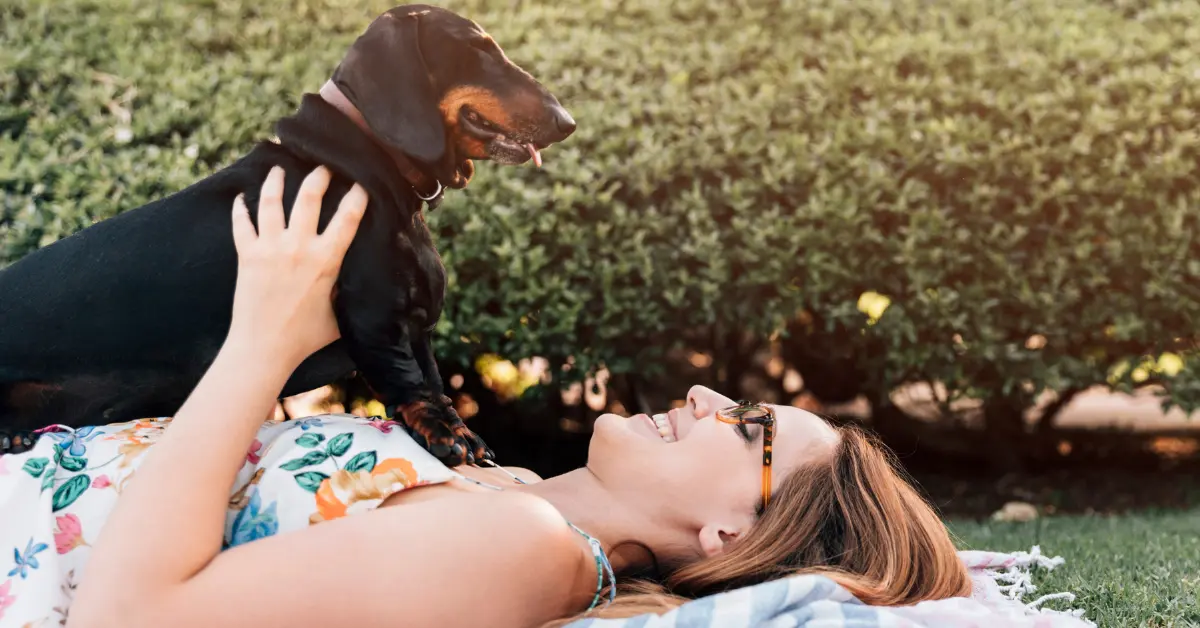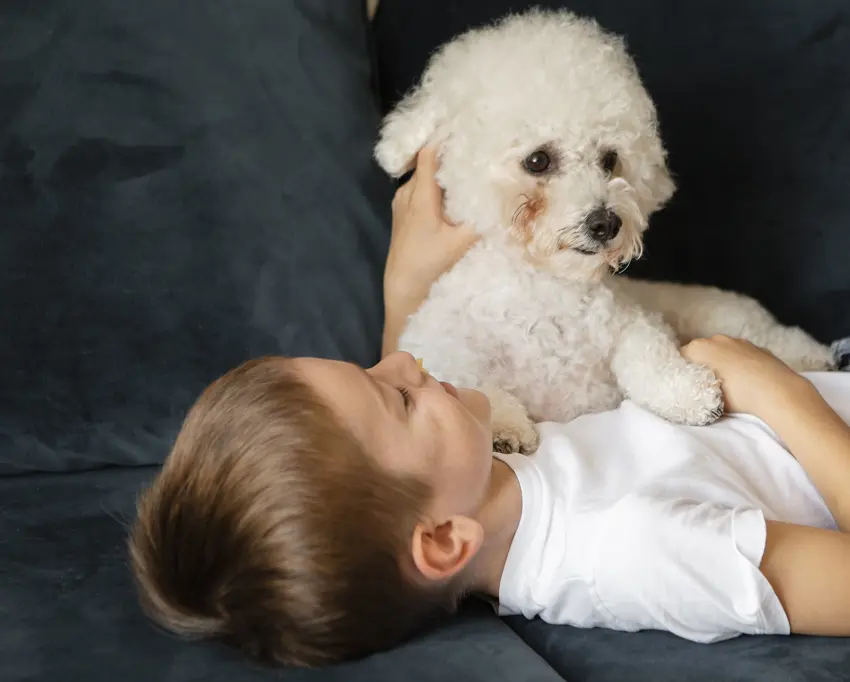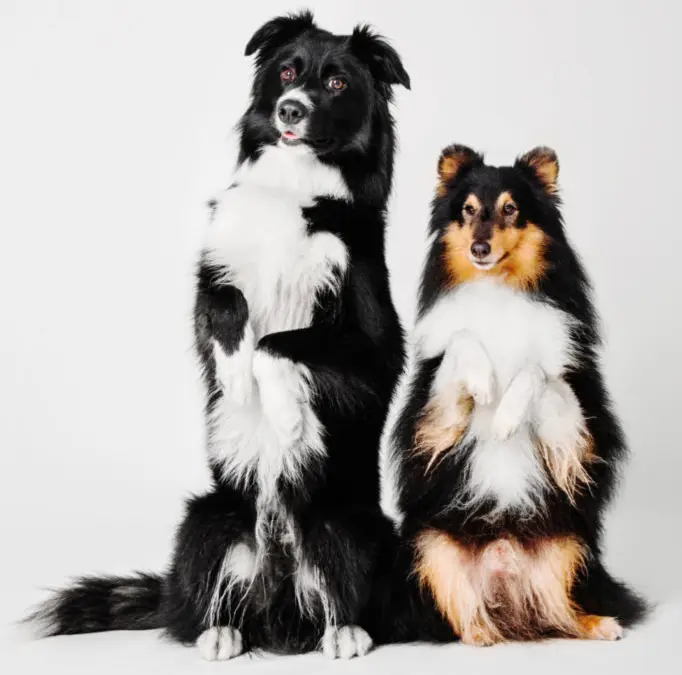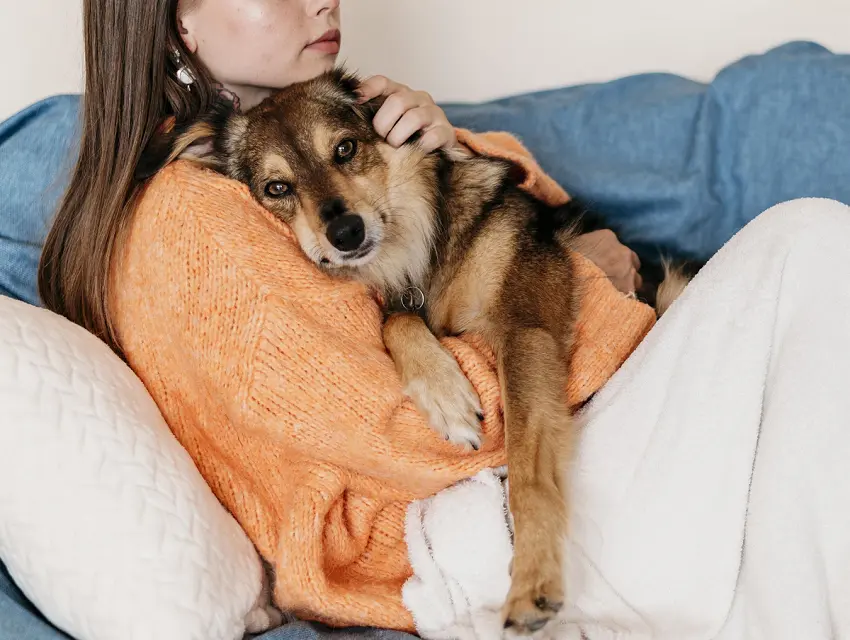Why Does My Dog Sit On My Chest? 6 Common Reasons
Why does my dog sit on my chest or put their butt on me? Dogs communicate through body language, and understanding their signals can provide insights into why they sit on your chest. When a dog sits on your chest, pay attention to their overall body posture. Are their ears relaxed or alert? Is their tail wagging or tucked between their legs? These subtle cues can indicate their emotional state and intentions.
Additionally, observe their facial expressions. A dog with relaxed eyes and a slightly open mouth may be displaying contentment or affection. On the other hand, if their eyes are wide, their mouth is tightly closed, or they are showing their teeth, it could be a sign of fear or aggression.

By interpreting your dog’s body language, you can better understand why they choose to sit on your chest and respond accordingly.
Why does my dog sit on my chest? 6 possible reasons

1. Your dog is asserting its dominance.
One of the most common reasons for this behavior is dominance. Sitting on your chest clearly indicates that your dog doesn’t respect you and only sees you as a lower in the pack order.
In the wild, dogs arrange the pack through a hierarchy. The alpha is the leader that everyone else must follow. Domesticated dogs still exhibit this ranking. Since your dog can sit on top of you, you’re giving it the right to be the alpha. This is something you’d want to avoid. Proper training is necessary to turn the situation around. You must take action about this behavior because it can lead to other problems along the way.
2. Your dog wants your attention.

Dogs can be needy so sitting on your chest is their way of begging for your attention. This happens if you don’t spend enough time with the pooch. I don’t recommend rewarding this behavior. Instead, you should schedule bonding time with your dog and make sure it is getting enough exercise and mental stimulation.
3. Your dog is anxious.
Anxiety will drive your dog to seek comfort at your side. Aside from sitting on your chest, your dog will cry and appear stressed. This can happen if you’ve been away for long periods and your absence makes your dog anxious. If not addressed, this can develop into separation anxiety.
Take note that separation anxiety is a serious problem. If you don’t deal with it, your dog will soon develop destructive behavior due to intense anxiety and stress.
4. Your dog is being protective.
Some dog breeds are more protective than others. My dog Sherlock will sometimes sit on my chest when there are guests or other dogs around. It’s his way of telling others that he will protect me no matter what. This is often tinged with jealousy, especially if I try to pet other dogs around.
The good thing about this behavior is that you can easily train your dog out of it. You can reduce overprotectiveness by slowly introducing your dog to other people and canines. Socializing an overprotective dog and positive reinforcement will do wonders for your possessive canine.
5. Your dog likes your warmth.
Why does my dog sit on my chest and shiver? During a cold day, your chest is a perfect place to enjoy the heat your body generates. This can be comforting for your pooch.
Make sure your dog has a warm and cozy spot at home. You can place its bed near the fireplace or radiator so it can sleep quietly. You can also improvise using bottles filled with warm water. Take note that some dogs have a lower tolerance to cold temperatures than other breeds.
6. Your dog wants to play.
Lastly, sitting on your chest is a sign of affection from your dog. Sometimes, your dog will try to initiate playtime by sitting on your chest as you rest on the couch or may sit behind you on the couch.
I don’t see a problem with this behavior as long as the pooch isn’t being too demanding. But if you’re afraid that the dog may develop negative behavior, it’s best not to reward this behavior with playtime.
Frequently Asked Questions
Why does my dog sit on my face?
Another weird habit of dogs is sitting on their owners’ faces. Most of the time, this is a learned behavior because you react positively when the dog first did it.
But as much as this habit is hilarious, sitting on your face is a sign of dominance. You should never tolerate this behavior. Instead, you should say a firm ‘no’ then command it to sit on the floor.
Why does my dog sleep on my chest?

Being on your chest is a secure and intimate experience for your dog. It makes them feel happy and safe, especially if your dog is anxious. Your dog feels like it’s curled with the pack since dogs in the wild often sleep right next to each other for security.
What does it mean when a dog stands at you?
Standing on top of you while you lie down is an outright statement of dominance. Your dog is establishing itself as the alpha of your pack, which is rooted in canines’ primal instincts in the wild. You should never tolerate this behavior. The moment your dog tries to get on top of you, say a firm ‘no’ then command it to sit on the floor.
What does it mean when a dog puts its weight on you?
Dogs are social animals and they often stay as close as possible to their packs. With this, leaning on you is a sign that your pooch considers you as a member of its pack. It’s the dog’s way of seeking comfort and safety on your side. Your dog will also rest its head on your shoulder as an affectionate gesture.
Conclusion
Why does my dog sit on my chest? The behavior of dogs sitting on your chest can be a complex and multifaceted display of communication, affection, comfort, and training. By understanding your dog’s body language and emotional state, you can better interpret why they choose to sit on your chest and respond accordingly.
Whether it’s a way for them to show dominance, seek comfort, signal anxiety, or respond to training, the act of sitting on your chest can reveal a lot about your dog’s needs and feelings. To further explore this topic and deepen your understanding of canine behavior, consider observing and interacting with your dog in different situations to strengthen your bond and communication with them.
